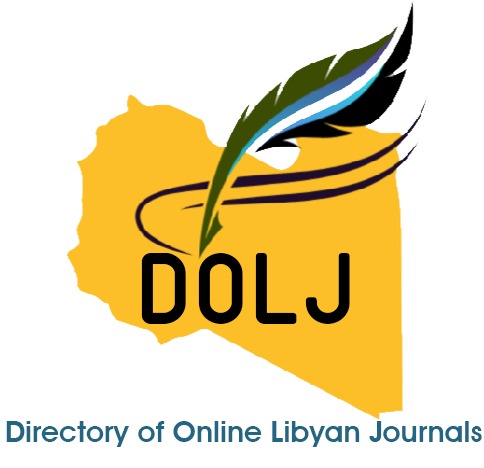Efficacy and Safety of Dulaglutide versus Semaglutide in Patients with Type 2 Diabetes and Cardiovascular Diseases: A Systemic Review and Meta-Analysis
Abstract
Dulaglutide and semaglutide are both glucagon-like peptide-1 (GLP-1) receptor agonists that have been shown to be effective in reducing blood glucose levels in patients with type 2 diabetes. However, it is unclear whether there are any differences in their efficacy and safety in patients with type 2 diabetes and cardiovascular disease (CVD). This meta-analysis aimed to compare the efficacy and safety of dulag-lutide and semaglutide in patients with type 2 diabetes and cardiovascular disease (CVD). This sys-tematic review was conducted to identify randomized controlled trials (RCTs) comparing dulaglutide and semaglutide in patients with type 2 diabetes and CVD. We searched PubMed, virtual health library, Cochrane Central Register of Controlled Trials, and ClinicalTrials.gov for the last 5 years starting from 2018. Two authors independently screened the titles and abstracts of all identified studies, and full-text articles of eligible studies were retrieved. Data were extracted and analyzed using a random-effects model and quality assessed by ROB2 tool. The primary outcome measure was the reduction in HbA1c levels, while secondary outcomes included major adverse cardiovascular events (MACE) and adverse events. Statistical analysis was performed using standard difference in means (SDM) with 95% con-fidence intervals (CI). Three RCTs involving a total of 1691 patients were included in the meta-analysis. The analysis showed that both dulaglutide and semaglutide were effective in reducing blood glucose levels in patients with type 2 diabetes and CVD. However, the meta-analysis results indicated that semaglutide may be more effective than dulaglutide in controlling blood sugar levels, as measured by HbA1c. The SDM for HbA1c reduction favored semaglutide, with a pooled SDM of 0.383 (95% CI: 0.243-0.523, p < 0.001). In terms of MACE, both drugs were found to reduce the incidence of cardi-ovascular events, but there was no significant difference between the two treatments. The analysis of adverse events showed that the most common side effects for both drugs were mild to moderate gas-trointestinal disturbances, such as nausea and diarrhea. This meta-analysis suggests that both dulaglutide and semaglutide are effective and welltolerated treatment options for patients with type 2 diabetes and CVD. However, semaglutide may provide better glycemic control, as indicated by a sig-nificant reduction in HbA1c levels compared to dulaglutide. Further research is needed to validate these findings and to evaluate the long-term cardiovascular and renal effects of these drugs. Clinicians should consider individual patient characteristics and preferences when selecting between dulaglutide and semaglutide for the management of type 2 diabetes and CVD, favoring therapies with high efficacy, tolerability, cost-effectiveness, low hypoglycemic risk, and increasingly, the benefit of CVD risk reduc-tion.
يُعد كل من دواء دولاجلوتيد ودواء سيماجلوتيد منبهات لمستقبلات الببتيد-1 الشبيهة بالجلوكاجون (GLP-1) والتي أثبتت فعاليتها في خفض مستويات الجلوكوز في الدم لدى مرضى السكري من النوع 2. ومع ذلك، فمن غير الواضح ما إذا كانت هناك أي اختلافات في فعاليتها وسلامتها لدى مرضى السكري من النوع 2 وأمراض القلب والأوعية الدموية. يهدف هذا التحليل التلوي إلى مقارنة فعالية وأمان دواء دولاجلوتيد ودواء سيماجلوتيد لدى مرضى السكري من النوع 2 وأمراض القلب والأوعية الدموية. أُجريت هذه المراجعة المنهجية لتحديد التجارب السريرية العشوائية التي تقارن بين دواء دولاجلوتيد ودواء سيماجلوتيد لدى مرضى السكري من النوع 2 وأمراض القلب والأوعية الدموية. لقد بحثنا في PubMed، والمكتبة الصحية الافتراضية، وسجل كوكرين المركزي للتجارب السريرية، وClinicalTrials.gov على مدار السنوات الخمس الماضية بدءًا من عام 2018. قام مؤلفان بشكل مستقل بفحص عناوين وملخصات جميع الدراسات المحددة، وتم استرداد المقالات النصية الكاملة للدراسات المؤهلة. تم استخراج البيانات وتحليلها باستخدام نموذج التأثيرات العشوائية وتقييم الجودة بواسطة أداة ROB2. كان مقياس النتيجة الأساسي هو انخفاض مستويات الهيموجلوبين السكري التراكمي، في حين تضمنت النتائج الثانوية الأحداث القلبية الوعائية الضارة الكبرى (MACE) والأحداث الضارة. تم إجراء التحليل الإحصائي باستخدام الفرق القياسي في المتوسطات (SDM) مع فاصل ثقة 95٪ (CI). تم تضمين ثلاث تجارب عشوائية محكومة شملت ما مجموعه 1691 مريضًا في التحليل التلوي. أظهر التحليل أن كل من الدولاجلوتيد والسيماجلوتيد كانا فعالين في خفض مستويات الجلوكوز في الدم لدى مرضى السكري من النوع 2 وأمراض القلب والأوعية الدموية. ومع ذلك، أشارت نتائج التحليل التلوي إلى أن السيماجلوتيد قد يكون أكثر فعالية من الدولاجلوتيد في التحكم في مستويات السكر في الدم، كما تم قياسه بواسطة الهيموجلوتيد السكري التراكمي. فضل الفرق القياسي في المتوسطات لخفض الهيموجلوتيد السيماجلوتيد، مع فرق قياسي مجمع قدره 0.383 (فاصل ثقة 95٪: 0.243-0.523، ص < 0.001). وفيما يتعلق بالتأثيرات الجانبية الخطيرة على القلب والأوعية الدموية، وجد أن كلا العقارين يقللان من حدوث الأحداث القلبية الوعائية، ولكن لم يكن هناك فرق كبير بين العلاجين. وأظهر تحليل الأحداث السلبية أن الآثار الجانبية الأكثر شيوعًا لكلا العقارين كانت اضطرابات معوية خفيفة إلى معتدلة، مثل الغثيان والإسهال. ويشير هذا التحليل التلوي إلى أن كلًا من عقاري الدولاجلوتيد والسيماجلوتيد هما خياران علاجيان فعالان وجيدان التحمل للمرضى المصابين بداء السكري من النوع 2 وأمراض القلب والأوعية الدموية. ومع ذلك، قد يوفر عقار السيماجلوتيد سيطرة أفضل على نسبة السكر في الدم، كما يتضح من الانخفاض الكبير في مستويات الهيموجلوتين السكري التراكمي مقارنة بعقار الدولاجلوتيد. وهناك حاجة إلى مزيد من البحث للتحقق من صحة هذه النتائج وتقييم التأثيرات القلبية الوعائية والكلوية طويلة الأمد لهذه العقاقير. يجب على الأطباء النظر في خصائص المريض الفردية وتفضيلاته عند الاختيار بين الدولاجلوتيد والسيماجلوتيد لإدارة مرض السكري من النوع 2 وأمراض القلب والأوعية الدموية، وتفضيل العلاجات ذات الفعالية العالية والتحمل والفعالية من حيث التكلفة ومخاطر انخفاض سكر الدم المنخفضة، وبشكل متزايد، فائدة تقليل مخاطر أمراض القلب والأوعية الدموية











